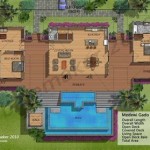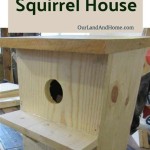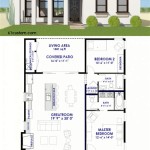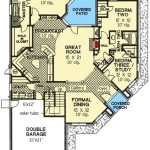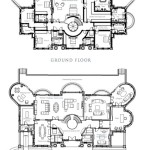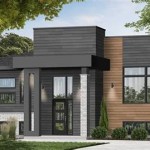A courtyard house plan is a residential design that centers around a central, enclosed outdoor space. This courtyard serves as the focal point of the home, providing natural light, ventilation, and a sense of privacy. Courtyard homes are commonly found in warm climates, where outdoor living is a key element of daily life.
One notable example of a courtyard house is the traditional Chinese siheyuan, which has been used for centuries. These homes feature a rectangular courtyard surrounded by four buildings, creating a sheltered and private space for the family. Modern courtyard house plans often incorporate contemporary design elements, such as large windows, sliding glass doors, and open floor plans, to maximize the connection between the interior and exterior spaces.
In the following sections, we will explore the benefits and considerations of courtyard house plans, including their advantages in terms of natural lighting, energy efficiency, and creating a sense of community. We will also provide examples of modern courtyard house designs and discuss the key factors to consider when designing such a home.
Courtyard house plans offer several important advantages:
- Increased natural lighting
- Improved ventilation
- Enhanced privacy
- Energy efficiency
- Sense of community
- Aesthetic appeal
- Versatile outdoor space
- Increased property value
Courtyard house plans can be tailored to a variety of needs and preferences, making them a popular choice for homeowners who value natural light, privacy, and outdoor living.
Increased natural lighting
One of the primary benefits of courtyard house plans is their ability to increase natural lighting within the home. The central courtyard acts as a lightwell, allowing sunlight to penetrate deep into the interior spaces. This natural light can reduce the need for artificial lighting during the day, saving energy and creating a more inviting and comfortable living environment.
- Windows and doors facing the courtyard: Courtyard house plans typically feature large windows and doors that face the courtyard, allowing for maximum natural light to enter the home. These windows and doors can be strategically placed to capture sunlight throughout the day, ensuring that even interior rooms receive ample natural light.
- Reflective surfaces: The courtyard walls and surfaces can be designed to reflect sunlight into the home. Light-colored surfaces, such as white or beige paint, can help to bounce light around the courtyard and into the surrounding rooms. This can further enhance the natural lighting within the home.
- Skylights: Skylights installed in the roof or ceiling of the courtyard can provide an additional source of natural light. These skylights can be placed strategically to direct sunlight into specific areas of the home, such as dark corners or hallways.
- Courtyard landscaping: The landscaping within the courtyard can also impact the amount of natural light entering the home. Trees and shrubs can be planted to provide shade and privacy, but care should be taken not to block out too much sunlight. Deciduous trees, which lose their leaves in the fall, can be a good choice for courtyards, as they allow sunlight to enter the home during the winter months.
By incorporating these design elements, courtyard house plans can maximize natural lighting within the home, creating a brighter, more inviting, and energy-efficient living space.
Improved ventilation
Courtyard house plans offer improved ventilation, which can help to create a more comfortable and healthy indoor environment. The central courtyard acts as a natural ventilation shaft, allowing air to circulate throughout the home. This can help to reduce indoor air pollution, humidity, and odors.
- Cross-ventilation: Courtyard house plans often feature windows and doors on opposite sides of the courtyard, which allows for cross-ventilation. This creates a natural airflow that can help to cool the home during the summer months and reduce the need for air conditioning.
- Stack effect: The stack effect is a natural phenomenon that occurs when warm air rises and cooler air sinks. In a courtyard house, the courtyard can act as a thermal chimney, drawing warm air up and out of the home through openings in the roof or upper floors. This can help to create a natural airflow and reduce the need for mechanical ventilation.
- Courtyard landscaping: The landscaping within the courtyard can also impact ventilation. Trees and shrubs can be planted to create windbreaks and direct airflow. Water features, such as fountains or ponds, can also help to cool the air and increase humidity.
- Passive design: Courtyard house plans can be designed to take advantage of passive design principles, which use natural elements to heat and cool the home. This can reduce the need for mechanical heating and cooling systems, which can further improve ventilation and indoor air quality.
By incorporating these design elements, courtyard house plans can improve ventilation, creating a more comfortable and healthy indoor environment.
Enhanced privacy
Courtyard house plans offer enhanced privacy, as the central courtyard provides a buffer between the home and the outside world. This can be beneficial for homeowners who value their privacy and security.
- Enclosed outdoor space: The courtyard is a private and secure outdoor space that can be used for relaxation, entertaining, or simply enjoying the outdoors. It is not visible from the street or neighboring properties, providing a sense of seclusion and privacy.
- Reduced noise pollution: The courtyard acts as a buffer against noise pollution from the outside world. The walls and landscaping of the courtyard can help to absorb and deflect noise, creating a more peaceful and tranquil environment within the home.
- Controlled access: Courtyard house plans typically have a single point of entry through the courtyard, which provides controlled access to the home. This can help to deter unwanted visitors and improve security.
- Natural surveillance: The courtyard can provide a natural surveillance area for the home. Homeowners can easily observe the courtyard from inside the home, which can help to deter crime and provide peace of mind.
By incorporating these design elements, courtyard house plans can enhance privacy, creating a more secure and secluded living environment.
Energy efficiency
Courtyard house plans can be designed to be highly energy efficient, which can help to reduce energy costs and create a more sustainable home. The central courtyard plays a key role in energy efficiency by providing natural light, ventilation, and thermal mass.
Natural light: As discussed earlier, courtyard house plans can maximize natural lighting within the home. This can reduce the need for artificial lighting during the day, saving energy. Additionally, the courtyard can be designed to reflect sunlight into the home, further reducing the need for artificial lighting.
Ventilation: The central courtyard also acts as a natural ventilation shaft, allowing air to circulate throughout the home. This can help to reduce the need for air conditioning during the summer months, as the courtyard can help to cool the home naturally. Additionally, the stack effect can be used to create a natural airflow through the home, further reducing the need for mechanical ventilation.
Thermal mass: The courtyard walls and surfaces can act as thermal mass, which helps to regulate the temperature of the home. During the day, the thermal mass absorbs heat from the sun. At night, the thermal mass releases this heat, helping to keep the home warm. This can reduce the need for heating and cooling systems, saving energy.
By incorporating these design elements, courtyard house plans can be highly energy efficient, creating a more sustainable and cost-effective home.
Sense of community
Courtyard house plans can foster a sense of community by creating shared outdoor spaces and encouraging interaction among residents. The central courtyard provides a common area where people can gather, socialize, and build relationships.
Shared outdoor space: The courtyard is a shared outdoor space that can be used for a variety of activities, such as relaxing, dining, entertaining, and playing. This shared space encourages residents to interact with each other and build a sense of community.
Social events: The courtyard can be used to host social events, such as barbecues, potlucks, and parties. These events provide opportunities for residents to socialize and get to know each other better, strengthening the sense of community.
Sense of belonging: The courtyard can create a sense of belonging for residents. By sharing a common outdoor space, residents feel connected to each other and to the community as a whole.
In addition to the above, courtyard house plans can also promote a sense of community by:
- Encouraging residents to participate in the design and maintenance of the courtyard, which can foster a sense of ownership and pride.
- Creating opportunities for intergenerational interaction, as courtyards can be enjoyed by people of all ages.
- Providing a safe and secure environment for children to play, which can encourage families to spend more time outdoors and interact with each other.
By incorporating these design elements, courtyard house plans can create a strong sense of community among residents, fostering a sense of belonging and connection.
Aesthetic appeal
Courtyard house plans offer a unique and aesthetically pleasing architectural style that can enhance the beauty and value of a home. The central courtyard serves as a focal point of the home, creating a visually striking and inviting space.
Architectural diversity: Courtyard house plans can be designed in a variety of architectural styles, from traditional to modern. This allows homeowners to choose a design that complements their personal taste and the surrounding environment. The courtyard can be incorporated into the home in different ways, such as a symmetrical layout, an asymmetrical layout, or a combination of both. This architectural diversity ensures that courtyard house plans can fit into a variety of neighborhoods and landscapes.
Landscaping and hardscaping: The landscaping and hardscaping of the courtyard play a key role in its aesthetic appeal. Lush gardens, water features, and outdoor sculptures can transform the courtyard into a serene and beautiful outdoor oasis. The materials used for hardscaping, such as stone, brick, or tile, can also impact the overall aesthetic of the courtyard. By carefully considering the landscaping and hardscaping, homeowners can create a courtyard that is both visually appealing and functional.
Natural light and shadow: The central courtyard allows for the interplay of natural light and shadow, which can create a dramatic and beautiful effect. The changing light throughout the day can transform the appearance of the courtyard, creating different moods and atmospheres. Homeowners can use this natural light to their advantage by placing windows and doors strategically to capture the best light and views.
In addition to the above, courtyard house plans can also enhance aesthetic appeal by:
- Creating a sense of spaciousness and openness, as the courtyard extends the living space outdoors.
- Providing a private and secluded outdoor space that can be enjoyed by the homeowners and their guests.
- Increasing the curb appeal of the home, as a well-designed courtyard can make the home more attractive from the street.
By incorporating these design elements, courtyard house plans can create a home that is both aesthetically pleasing and functional, providing homeowners with a beautiful and enjoyable living space.
Versatile outdoor space
The central courtyard in a courtyard house plan creates a versatile outdoor space that can be used for a variety of purposes, depending on the needs and preferences of the homeowners. This outdoor space can be transformed to accommodate different activities and functions, making it a valuable extension of the home’s living space.
- Relaxation and recreation: The courtyard can be designed as a private oasis for relaxation and recreation. Comfortable seating, such as lounge chairs or sofas, can be placed in the courtyard to create a cozy and inviting space for reading, sunbathing, or simply enjoying the outdoors. The courtyard can also be equipped with a barbecue grill or fire pit, making it an ideal spot for outdoor dining and entertainment.
- Gardening and landscaping: The courtyard provides an excellent space for gardening and landscaping. Homeowners can create a lush garden with flowers, shrubs, and trees, or they can grow vegetables and herbs in raised beds. The courtyard can also be used to display outdoor sculptures or other works of art, creating a beautiful and inspiring outdoor space.
- Play area for children: The courtyard can be transformed into a safe and secure play area for children. Soft landscaping, such as a grassy area or rubber mulch, can be installed to provide a comfortable and impact-absorbing surface for play. The courtyard can also be equipped with play equipment, such as a swing set, sandbox, or playhouse, providing children with a dedicated and stimulating outdoor play space.
- Outdoor dining and entertaining: The courtyard can be used to create an outdoor dining and entertaining area. A dining table and chairs can be placed in the courtyard, allowing homeowners to enjoy meals al fresco. The courtyard can also be used to host larger gatherings, such as parties or barbecues, as it provides a spacious and comfortable outdoor space for guests to socialize and enjoy themselves.
By incorporating these design elements, courtyard house plans can create a versatile outdoor space that can be used for a variety of purposes, providing homeowners with a functional and enjoyable extension of their living space.
Increased property value
Courtyard house plans can also increase the property value of a home. A well-designed courtyard can add to the home’s aesthetic appeal, functionality, and desirability, which can all contribute to an increase in property value.
- Enhanced curb appeal: A well-designed courtyard can make a home more attractive from the street, which can increase its curb appeal. This can be beneficial when selling the home, as potential buyers are often drawn to homes with visually appealing exteriors.
- Increased living space: The courtyard can be seen as an extension of the home’s living space, which can increase the overall square footage of the home. This can be a valuable selling point, as buyers are often looking for homes with more space.
- Unique and desirable feature: Courtyard house plans are not as common as traditional house plans, which can make them more unique and desirable. This uniqueness can be a selling point for buyers who are looking for a home that stands out from the crowd.
- Improved energy efficiency: As discussed earlier, courtyard house plans can be designed to be energy efficient, which can save homeowners money on their energy bills. This energy efficiency can be a valuable selling point for buyers who are looking for homes that are more sustainable and cost-effective to operate.
In addition to the above, courtyard house plans can also increase property value by creating a more private and secluded outdoor space, which can be a valuable amenity for homeowners in urban or suburban areas. Overall, courtyard house plans offer a number of benefits that can add value to a home, making them a desirable choice for homeowners who are looking to increase their property value.










Related Posts

